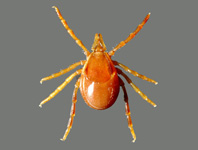Abstract
The book Australian Ticks by F.H.S. Roberts (1970) is a land-mark in Australian tick biology. But it is time for a new and improved book on the ticks of Australia. The present book has identification guides and accounts of the biology and diseases associated with the 16 species of ticks that may feed on domestic animals and humans in Australia. These comprise five argasid (soft) ticks: Argas persicus (poultry tick), Argas robertsi (Robert’s bird tick), Ornithodoros capensis (seabird soft tick), O. gurneyi (kangaroo soft tick), Otobius megnini (spinose ear tick); and 11 ixodid (hard) ticks, Amblyomma triguttatum (ornate kangaroo tick), Bothriocroton auruginans (wombat tick), B. hydrosauri (southern reptile tick), Haemaphysalis bancrofti (wallaby tick), H. longicornis (bush tick), Ixodes cornuatus (southern paralysis tick), I. hirsti (Hirst's marsupial tick), I. holocyclus (paralysis tick), I. tasmani (common marsupial tick), Rhipicephalus (Boophilus) australis (Australian cattle tick) and R. sanguineus (brown dog tick). We use an image-matching system to identify ticks, much like the image-matching systems used in field-guides for birds and flowers. Ticks may be identified by drawings that emphasise unique matrices of uniformly defined morphological characters that, together, allow these 16 ticks to be identified by morphology unequivocally. The species accounts have seven sections: (i) General; (ii) Differential diagnosis; (iii) Hosts; (iv) Life-cycle and seasonality; (v) Disease; (vi) Habitat and geographic distribution; (vii) Genes and genomes; and (viii) Other information. There are 71 figures and tables, including a glossary character matrices, drawings of life-cycles, drawings of genera, species, and colour photographs of tick biology.

